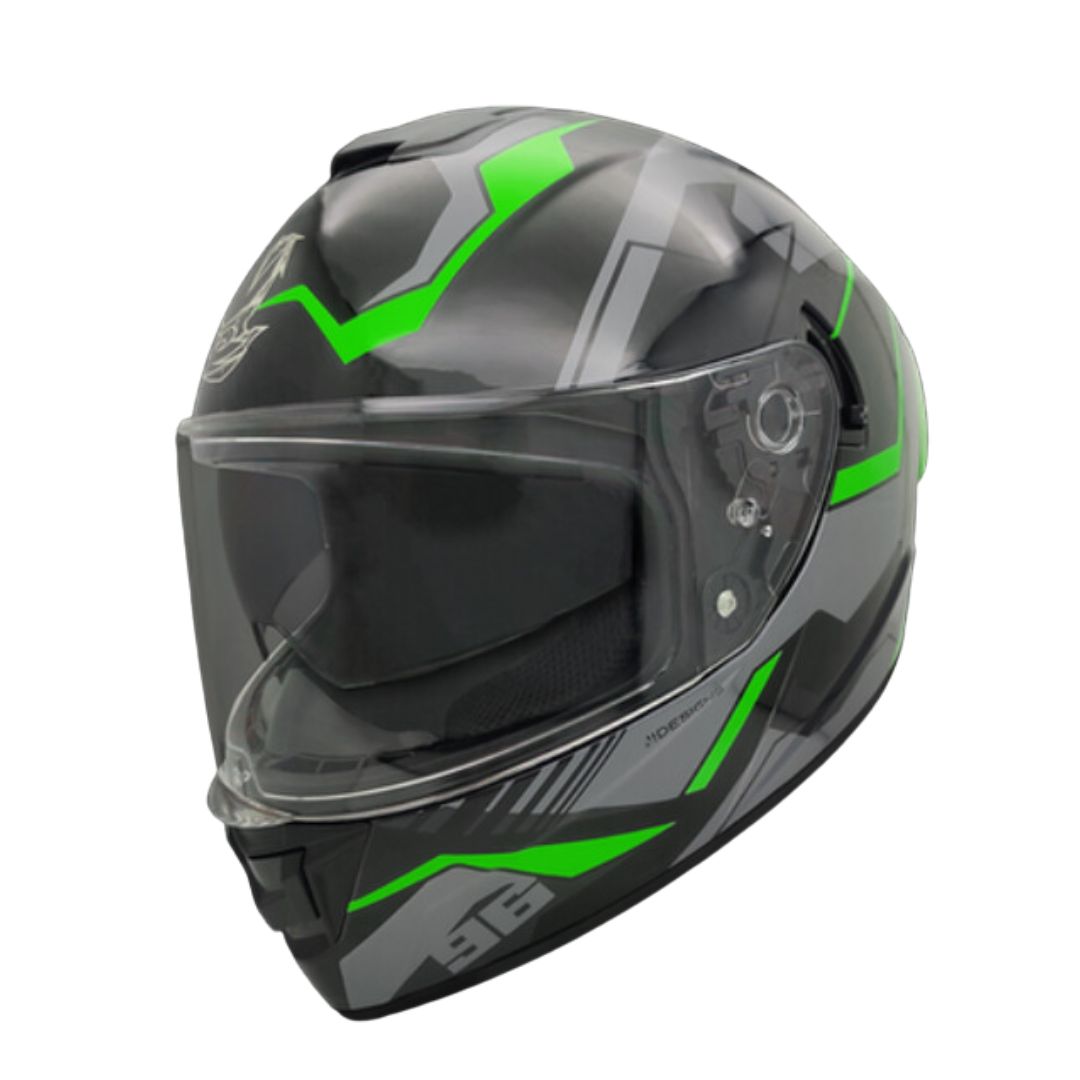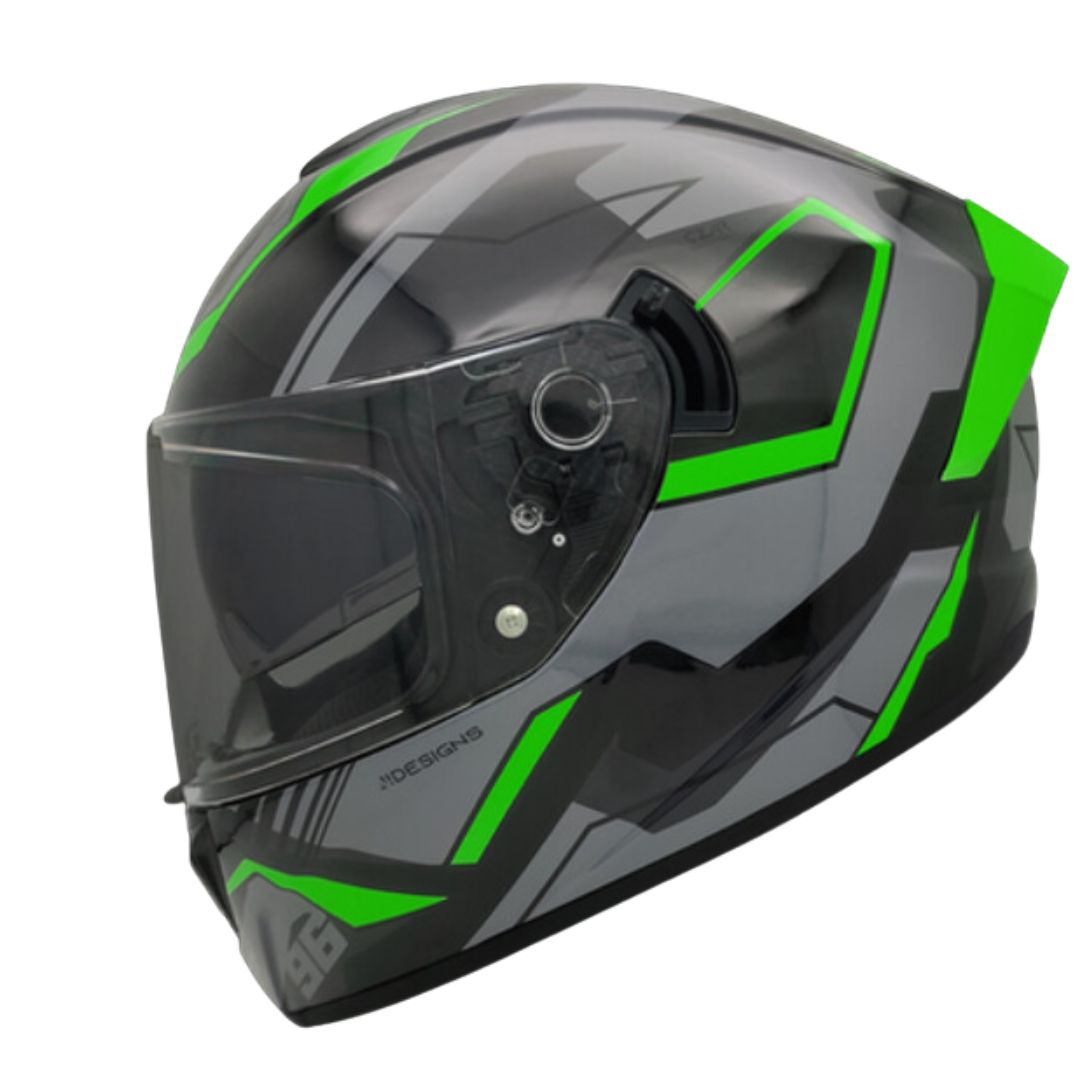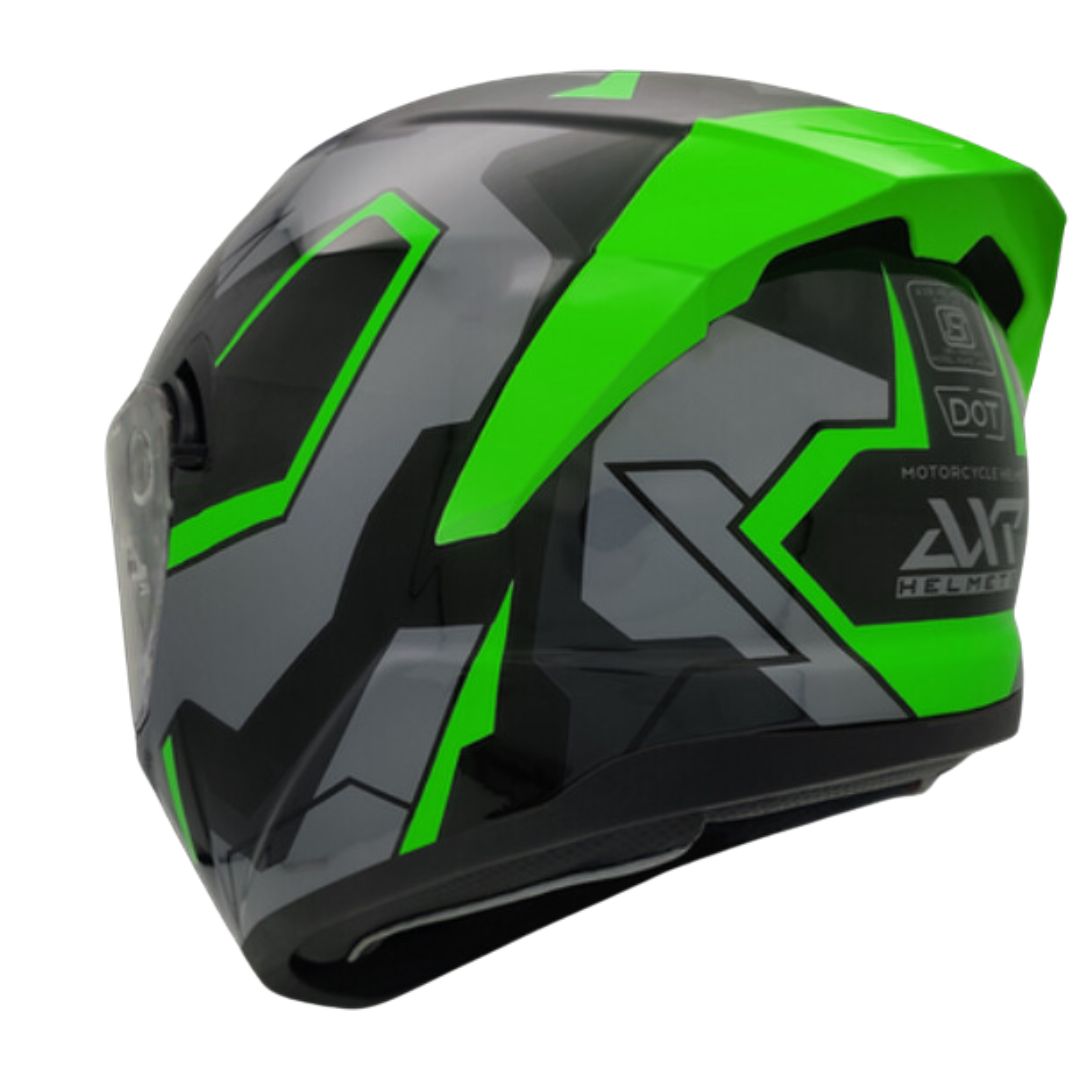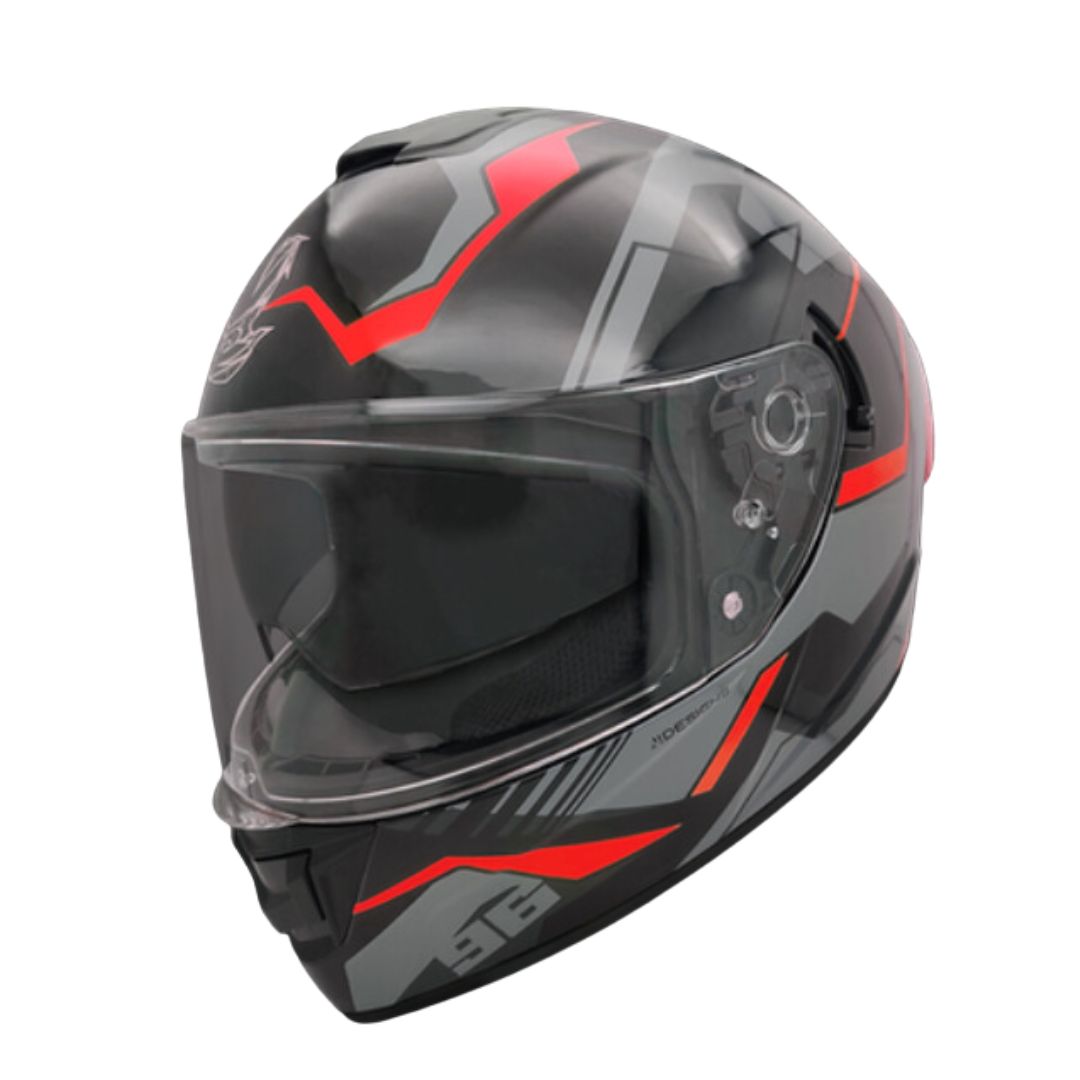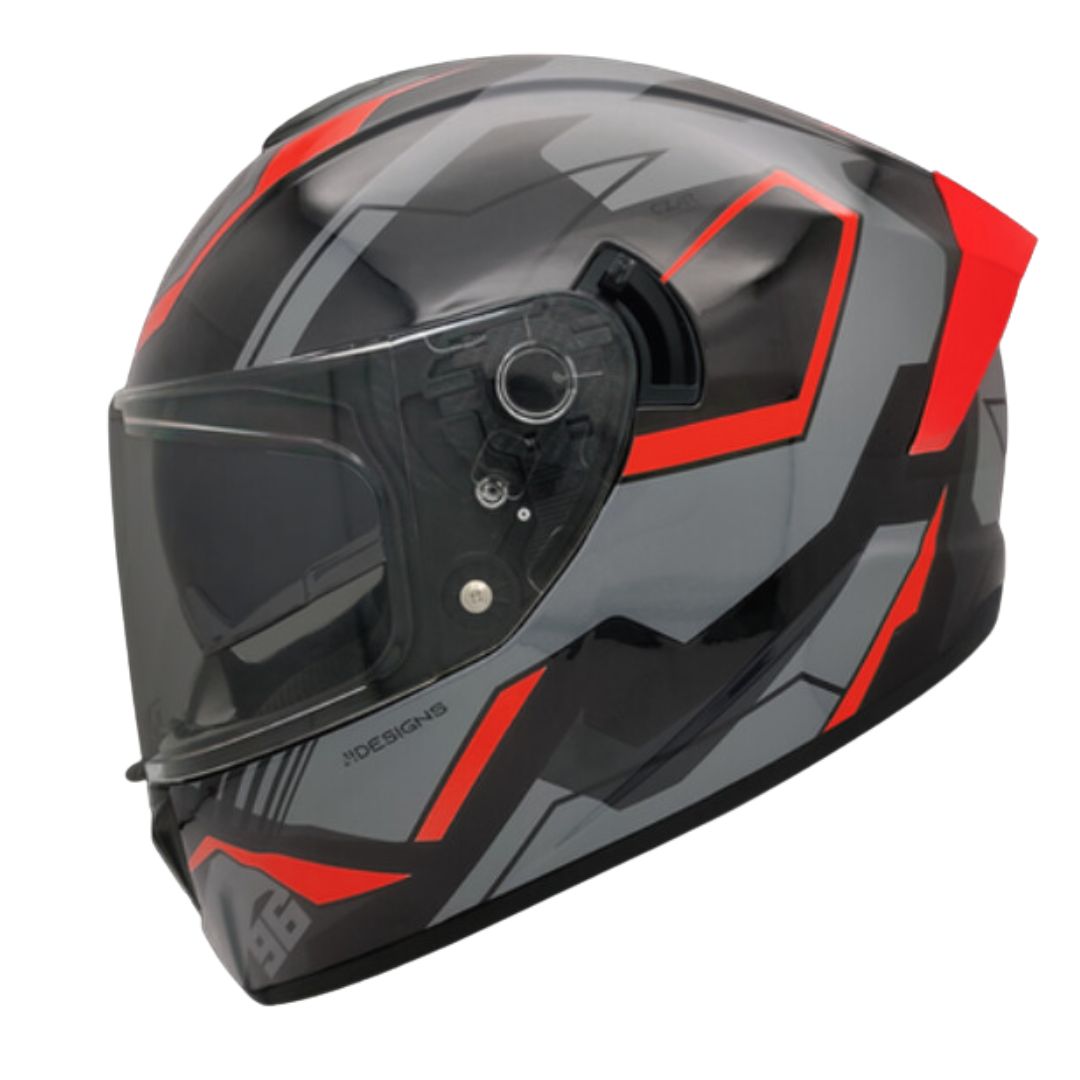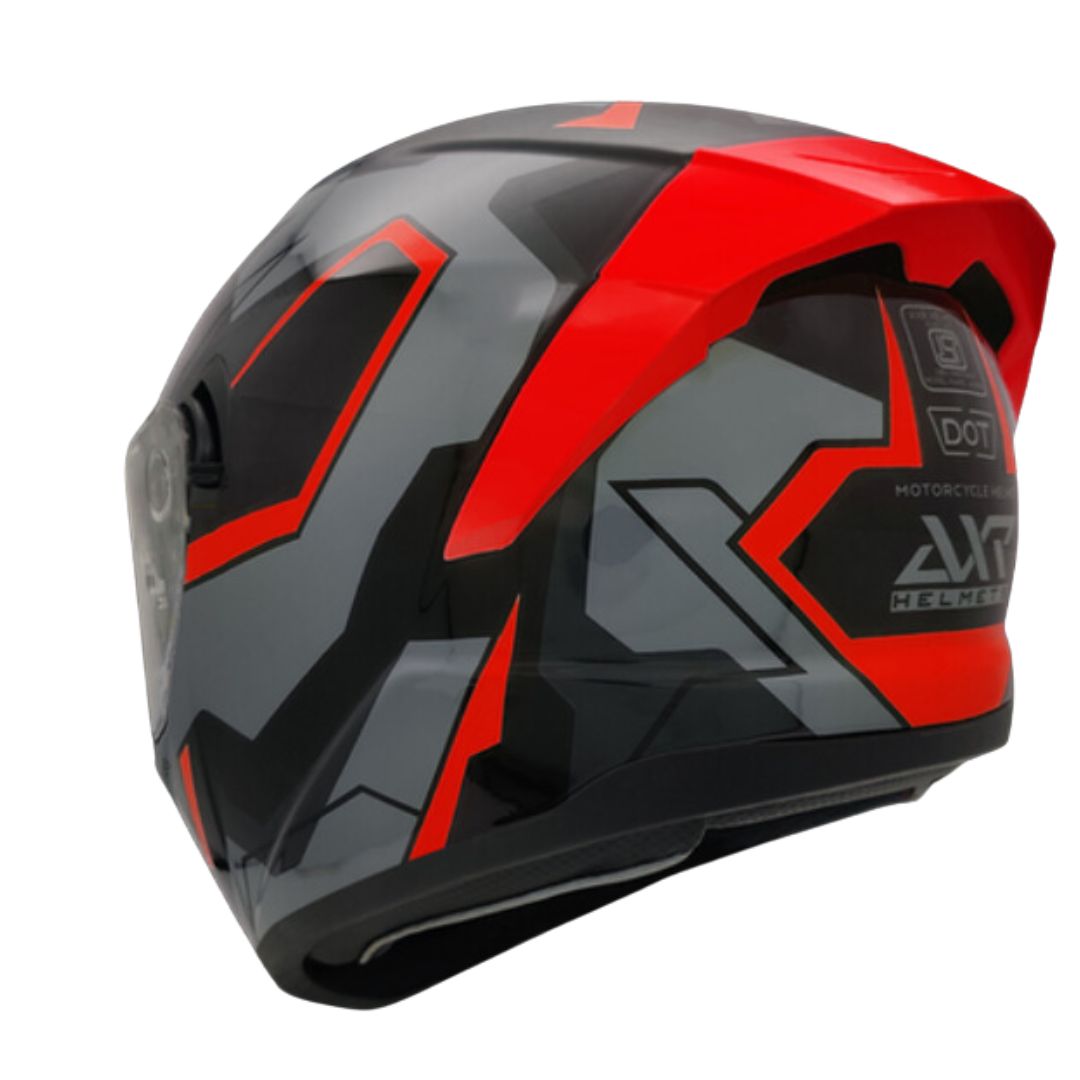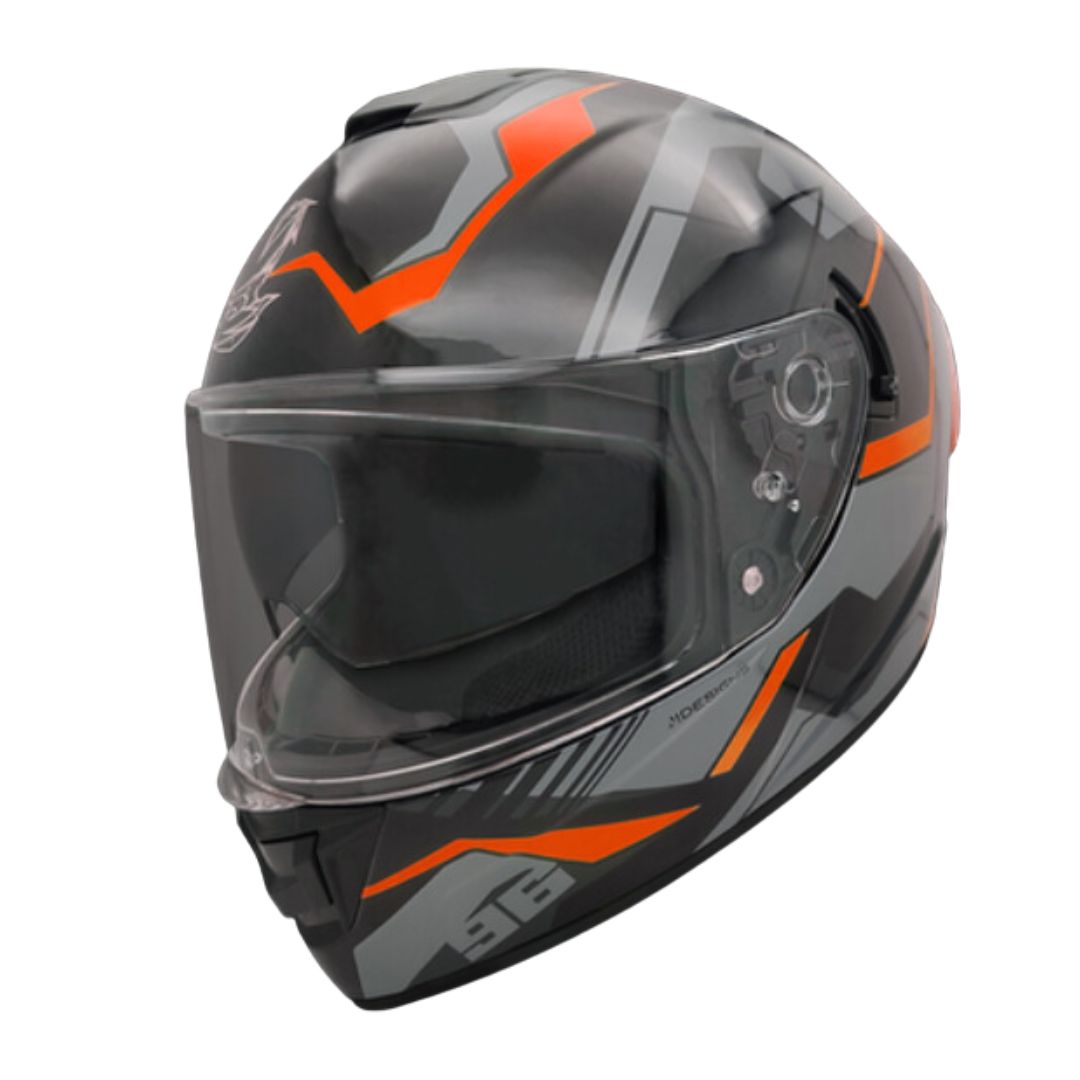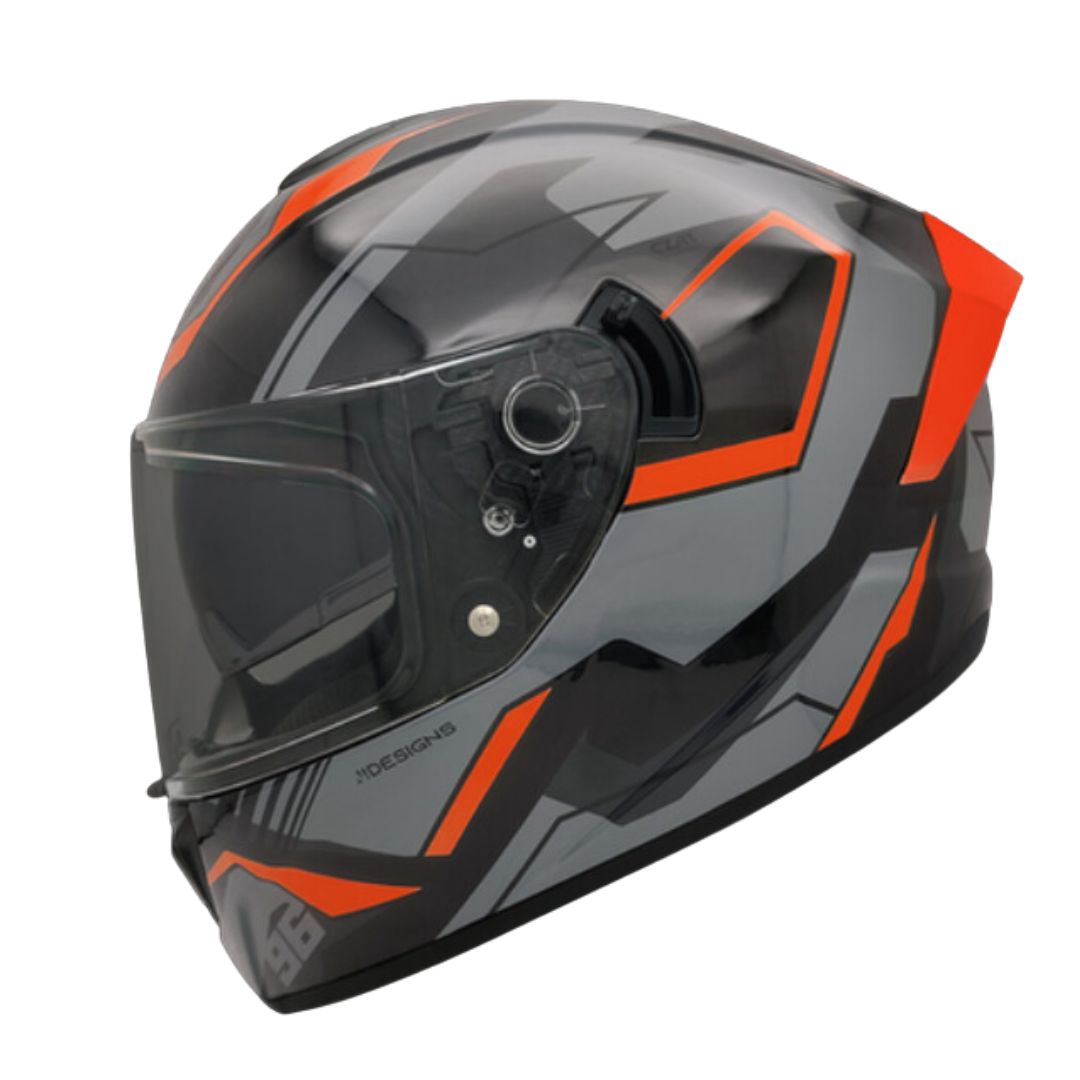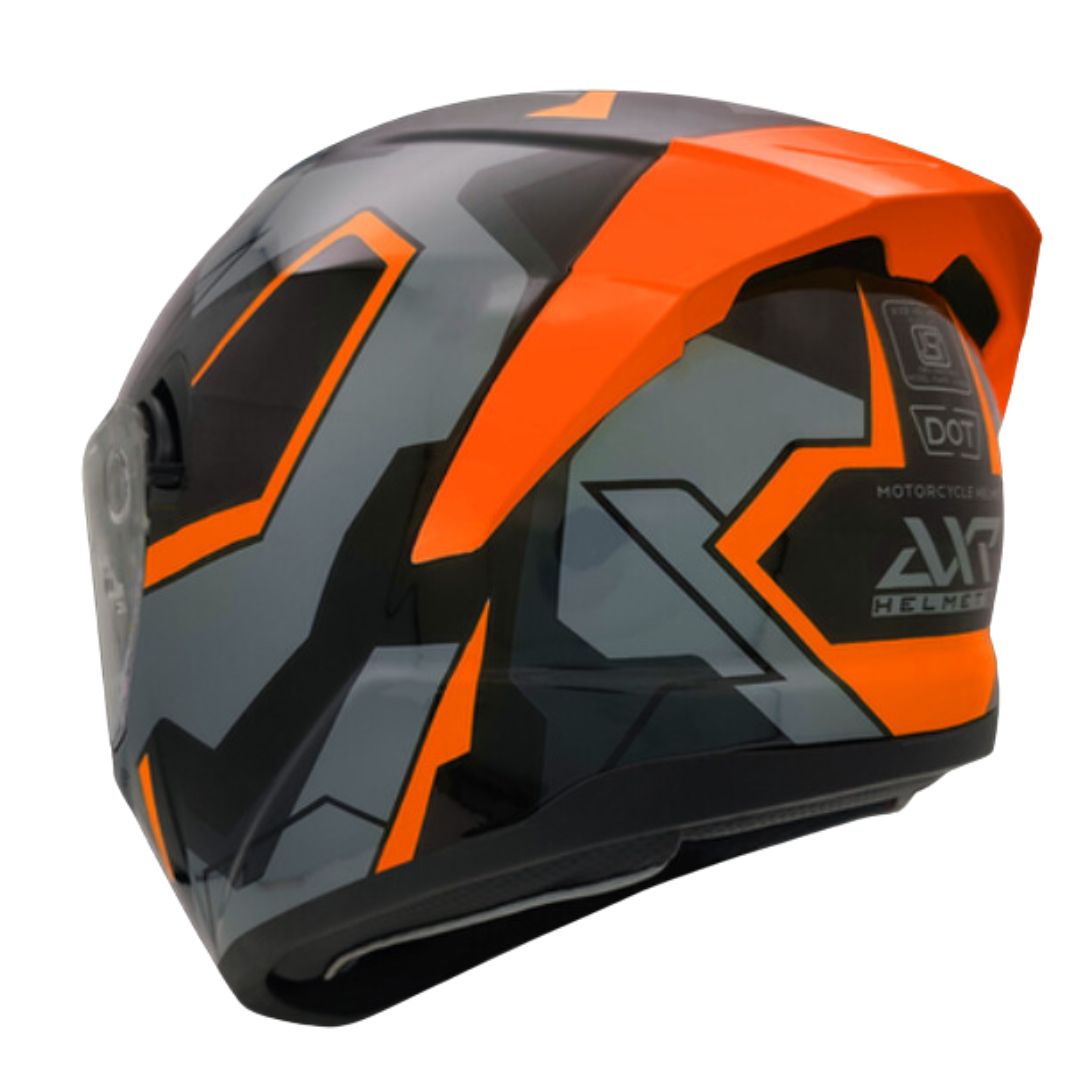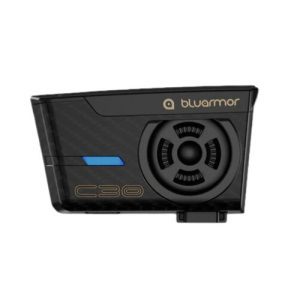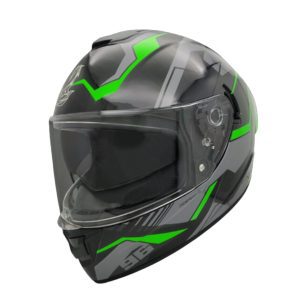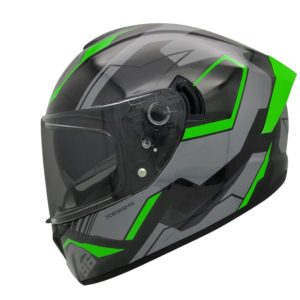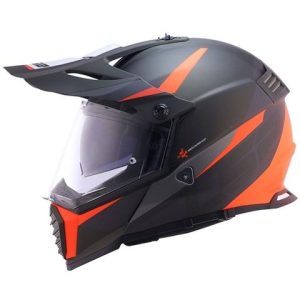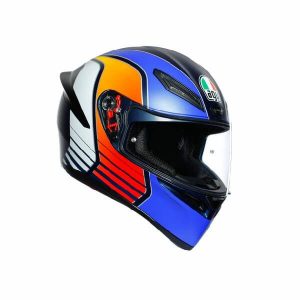Features – AXR Edge X
Comfort –
Dual Visor System for hassle-free riding under any conditions
Anti-Bacterial Fabricswhich prevent odour formation over time
Bluetooth is Compatible with recessed liners so you can stay on the grid even while riding off it
Chin Curtain prevents dust, noise and wind whistling from disturbing you
Anatomically shaped 3D Linersfor the ultimate fit, one that is comfortable yet safe
Extended Nose Guard that helps direct the ventilation better






Performance –
Short Tail Spoiler maintains helmet stability at high speeds without troubling the pillion rider
Extended Nose Guard for more effective de-fogging during humid and cold weather
Visor Lock Mechanismprevents any visor-related mishaps or inconveniences while riding
Moisture Wicking Fabrics that keep you cool during long rides or high temperatures
Anatomically shaped 3D Liners prevent the helmet from shaking at speed
Optically Clear Visor that gives you an undistorted line of sight






Safety –
Impact Resistant ABSshellsfor higher shock resistance on impact than regular ABS Shells
High-Density EPScan absorbs larger amounts of force than regular EPS
Reflective Pipingon the bottom of the padding for nighttime visibility from the back
Quick Release Micro Adjustment Lock that allows you to perfectly adjust and tighten your belt lock
ISI Certified
DOT built to DOT, awaiting certification






impact absorption test
The Impact Absorption Test, while one among the many that are conducted, is a good indicator of how safe a helmet is. It tests the amount of force transferred to the rider’s head on impact. The lower the force transferred, the safer a helmet is.
Another crucial factor is the duration of time the rider is exposed to the force. Even minor forces can cause serious trauma if the duration is prolonged.
The test is performed by dropping a helmet, fitted with a head form and sensor, from a certain height onto a steel anvil. The helmet must be travelling at a velocity equal to 6.5 m/s immediately before impact. The sensor within the head form calculates the amount of force received by the head on impact. The test is performed 5 times per helmet, testing four different points on the head and once on the chin.




